OptiCAL
CompoNENTS
Bertin Winlight offers proven expertise in the manufacture of high-precision plano, spherical and aspherical (on-axis, off-axis or free-form) optical components, as well as X-ray mirrors.
Bertin Winlight makes high value-added optical components, ranging in size from just a few millimeters to 1.5 meters. Our temperature-controlled optics production plant spans some 2,200 square meters and is located in Pertuis, in the Vaucluse region of southeast France. We deploy both traditional and computer-controlled polishing (CCP) techniques, using both deterministic manufacturing methods (computer numerical control, or CNC) and traditional methods such as hand polishing to turn out high-quality components with minimal surface roughness down to 0.1 nm RMS.
Our teams also use innovative technologies to make all types of optical components, including aspherical optics (on-axis, off-axis or free-form). One of our special areas of expertise is the production of X-ray mirrors, designed to reflect photons at a grazing angle of incidence for applications such as synchrotron experiments.
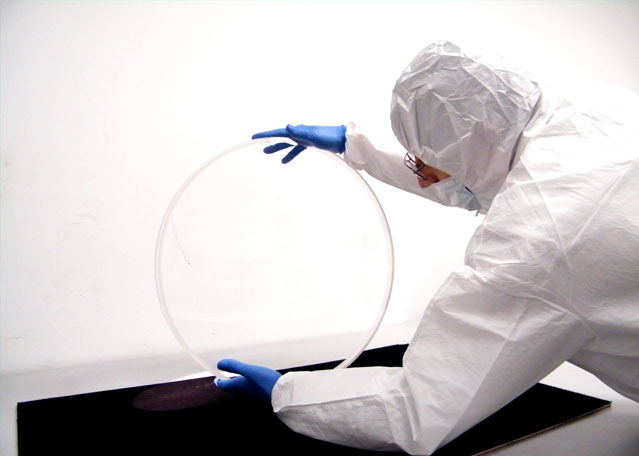
LenSES, mirROrs, prisms
Bertin Winlight makes a wide range of optical components, including:
-
Plano, spherical and on-axis or off-axis aspherical mirrors
- Lenses, prisms, portholes
- Cylindrical and toroidal mirrors
- Image slicers, thin slits, stepped mirrors
- Free-form optics
Bertin Winlight has mastered polishing techniques for all types of materials: low expansion coefficient (silica, Zerodur, ULE, etc.) and infrared (ZnSe, germanium, silica) optics, as well as optical-grade glass (Schott, Ohara, etc.), crystals (silica, Fluorine (CaF2), BaF2, etc.), ceramics (SiC) and metals (copper, aluminum, stainless and regular steel, Invar, etc.)
The degree of polishing precision also depends on the shape and size of the part in question. In addition, we have developed a proprietary technology for making image slicers, suited to volume production.
These slice type mirrors are produced with sharp edges (without bevels, chips or chamfers), which allows us to produce edges accurate to within a few microns. Bertin Winlight makes specific slicers for different formats (plane, curved, aspherical). This technology is perfectly suited to components for upcoming giant telescopes, in particular the Extremely Large Telescope (ELT), the Giant Magellan Telescope (GMT), etc.
ASPHERICAL MIRRORS
(ON-AXIS, OFF-AXIS, FREE-FORM)
Bertin Winlight makes on-axis or off-axis aspherical optics using innovative technologies that allow us to grind and polish parabolic optics directly off-axis without requiring a master parabola. Post-polishing steps are used on metallic mirrors machined with the diamond turning technique. All mirrors are then optically tested in configurations using null lenses or via direct interferometry tests.

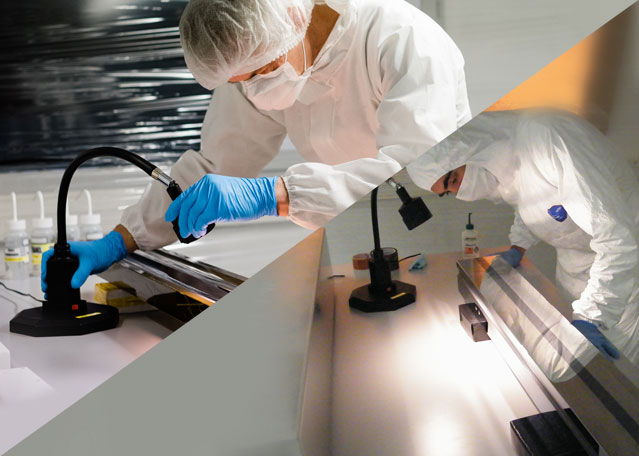
X-RAY MIRRORS (FLAT, CYLINDRICAL, TOROIDAL, PLANE-ELLIPTICAL)
Bertin Winlight grinds the blank, then polishes and coats components. These components and systems are compatible with ultra-vacuum conditions for X-ray applications. They are used in synchrotrons, free electron lasers, X-ray diagnostics and X-EUV applications. Based on customer specifications, we make mirrors up to 1,500 mm: plane, spherical, cylindrical, toroidal or plane-elliptical. Performance is evaluated by measuring the RMS slopes (e.g., 0.3 µrad RMS) and the quality of super-polishing by measuring surface roughness (e.g., 0.2 nm RMS). Our mirrors then undergo a complete inspection and are delivered with the test report, covering all initial specifications.
ASSOCIATED SYSTEMS
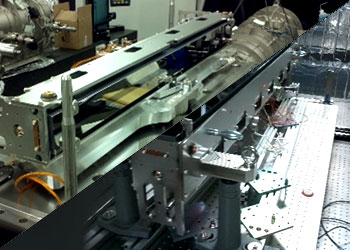
Our proprietary technology for bending mirrors in an ultra-vacuum environment is compatible with all mirrors up to 1,500 mm, upward, downward and sideward. The bender is used to deform the mirror, either by adding a simple curvature radius, or by generating an elliptical profile.
To achieve this result, we use the configuration specified by our customers to design the mirror and bender so we can ensure the bending stroke and resolution needed to guarantee mirror stability and quality under stress.
We can dispatch teams to install and wire the bender at your premises, and make sure it functions correctly in the vacuum chamber.
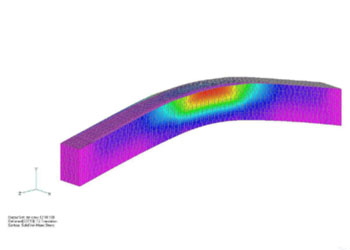
To guarantee mirror quality under radiation, we can also fit these mirrors with various types of coolers, whether using the side-cooling method or indirect cooling (Eutectic bath). We use finite element analysis (FEA) to optimize cooler design, and these calculations are included in the mirror quality budget.
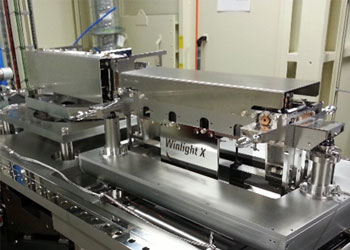
On request, Winlight System can design and build KB (Kirkpatrick-Baez) systems for micro and nano-focusing. These systems handle either bendable mirrors or fixed pre-shaped elliptical mirrors.
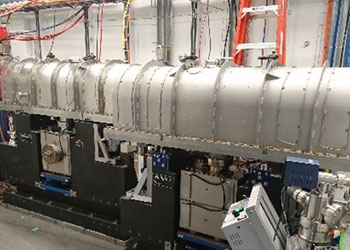
For complete systems under our responsibility, we design, build and test all components, including the mirror, bender, positioner and vacuum chamber, and then handle system installation. (The photo shows two complete systems built by Winlight System, with curved mirrors of up to 1,400 mm, installed at NSLS2 in the United States)
